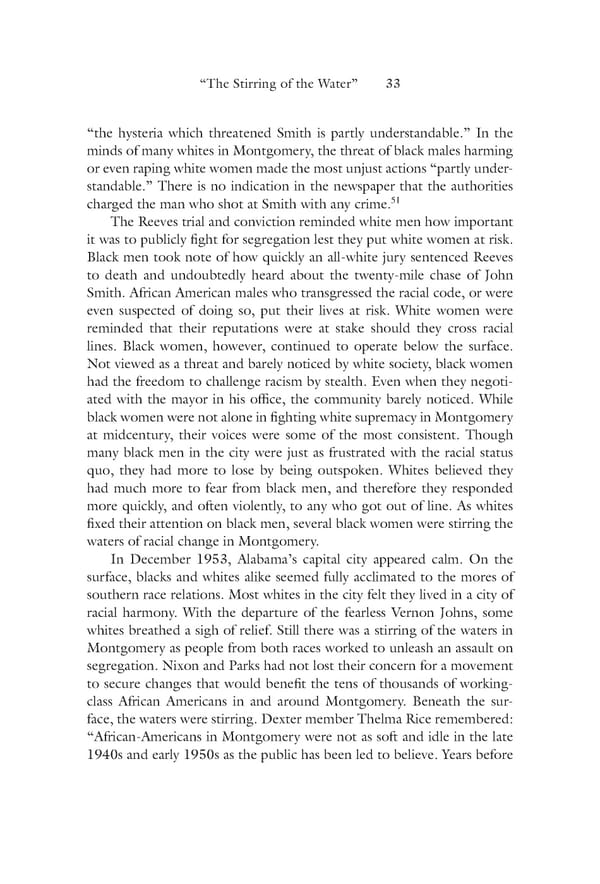“The Stirring of the Water” 33 “the hysteria which threatened Smith is partly understandable.” In the minds of many whites in Montgomery, the threat of black males harming or even raping white women made the most unjust actions “partly under- standable.” There is no indication in the newspaper that the authorities 51 charged the man who shot at Smith with any crime. The Reeves trial and conviction reminded white men how important it was to publicly fight for segregation lest they put white women at risk. Black men took note of how quickly an all-white jury sentenced Reeves to death and undoubtedly heard about the twenty-mile chase of John Smith. African American males who transgressed the racial code, or were even suspected of doing so, put their lives at risk. White women were reminded that their reputations were at stake should they cross racial lines. Black women, however, continued to operate below the surface. Not viewed as a threat and barely noticed by white society, black women had the freedom to challenge racism by stealth. Even when they negoti- ated with the mayor in his office, the community barely noticed. While black women were not alone in fighting white supremacy in Montgomery at midcentury, their voices were some of the most consistent. Though many black men in the city were just as frustrated with the racial status quo, they had more to lose by being outspoken. Whites believed they had much more to fear from black men, and therefore they responded more quickly, and often violently, to any who got out of line. As whites fixed their attention on black men, several black women were stirring the waters of racial change in Montgomery. In December 1953, Alabama’s capital city appeared calm. On the surface, blacks and whites alike seemed fully acclimated to the mores of southern race relations. Most whites in the city felt they lived in a city of racial harmony. With the departure of the fearless Vernon Johns, some whites breathed a sigh of relief. Still there was a stirring of the waters in Montgomery as people from both races worked to unleash an assault on segregation. Nixon and Parks had not lost their concern for a movement to secure changes that would benefit the tens of thousands of working- class African Americans in and around Montgomery. Beneath the sur- face, the waters were stirring. Dexter member Thelma Rice remembered: “African-Americans in Montgomery were not as soft and idle in the late 1940s and early 1950s as the public has been led to believe. Years before
 Becoming King: Martin Luther King Jr. Page 53 Page 55
Becoming King: Martin Luther King Jr. Page 53 Page 55